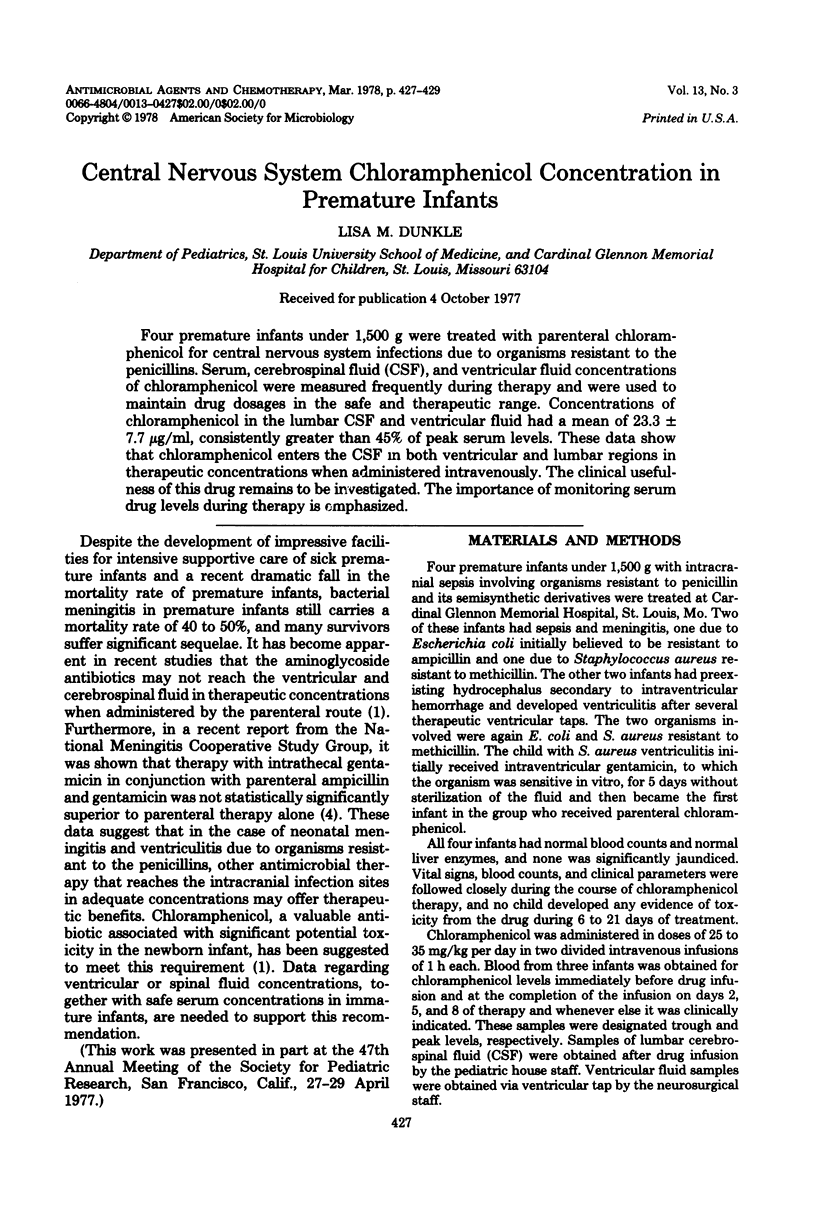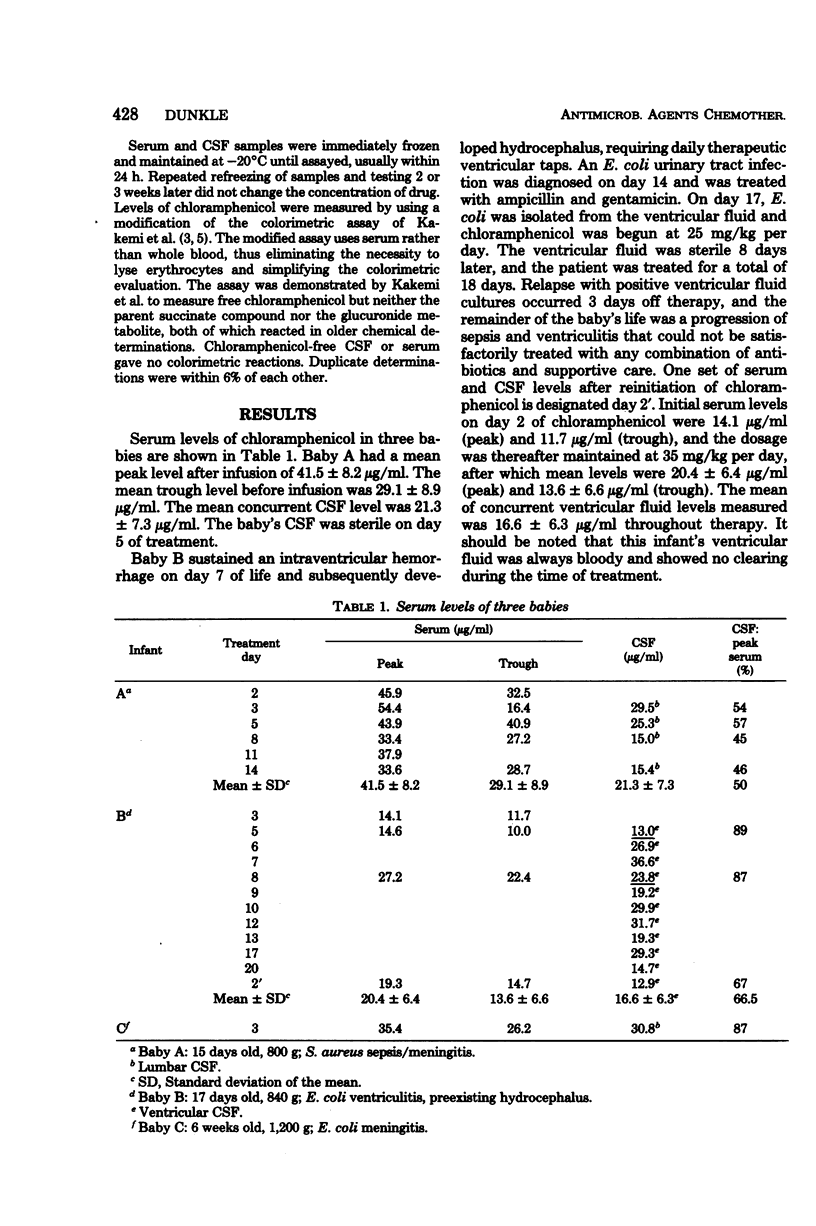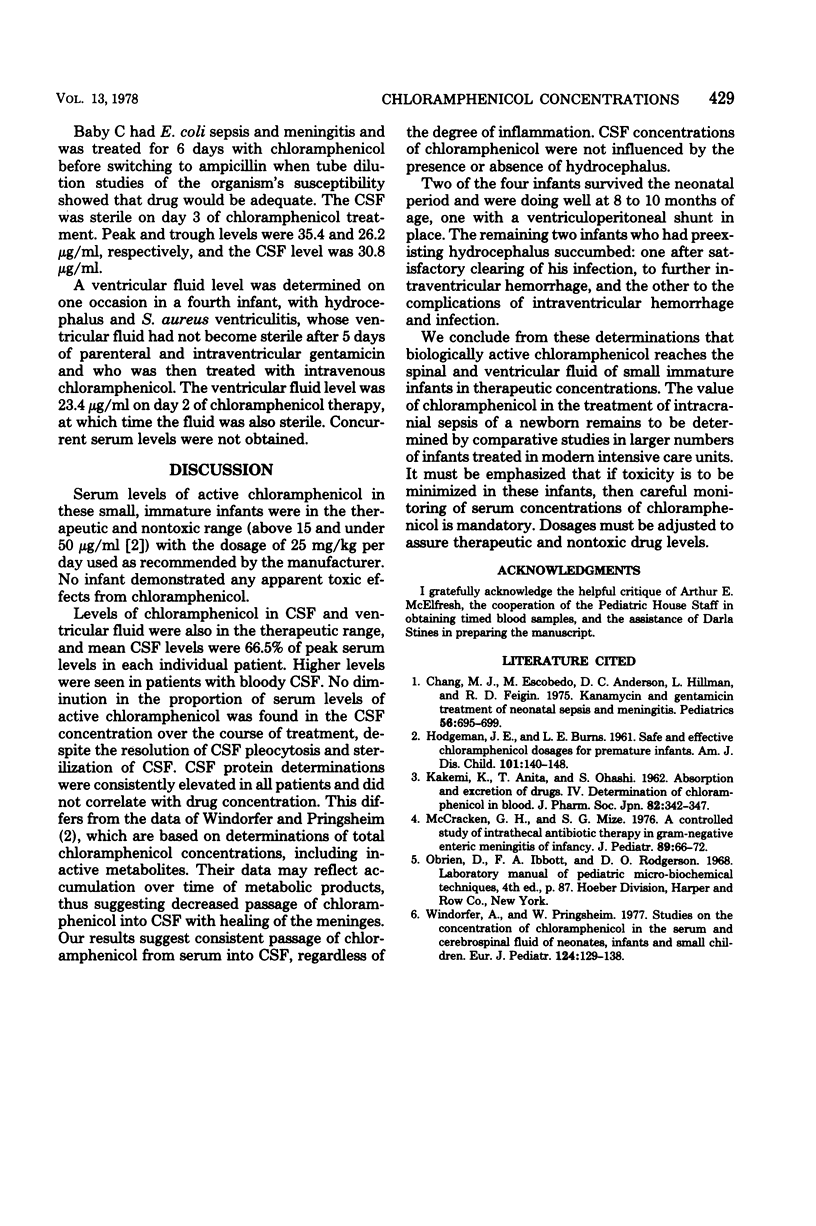Abstract
Four premature infants under 1,500 g were treated with parenteral chloramphenicol for central nervous system infections due to organisms resistant to the penicillins. Serum, cerebrospinal fluid (CSF), and ventricular fluid concentrations of chloramphenicol were measured frequently during therapy and were used to maintain drug dosages in the safe and therapeutic range. Concentrations of chloramphenicol in the lumbar CSF and ventricular fluid had a mean of 23.3 +/- 7.7 micrograms/ml, consistently greater than 45% of peak serum levels. These data show that chloramphenicol enters the CSF in both ventricular and lumbar regions in therapeutic concentrations when administered intravenously. The clinical usefulness of this drug remains to be investigated. The importance of monitoring serum drug levels during therapy is emphasized.
Full text
PDF


Selected References
These references are in PubMed. This may not be the complete list of references from this article.
- Chang M. J., Escobedo M., Anderson D. C., Hillman L., Feigin R. D. Kanamycin and gentamicin treatment of neonatal sepsis and meningitis. Pediatrics. 1975 Nov;56(5):695–699. [PubMed] [Google Scholar]
- HODGMAN J. E., BURNS L. E. Safe and effective chloramphenicol dosages for premature infants. Am J Dis Child. 1961 Feb;101:140–148. doi: 10.1001/archpedi.1961.04020030004002. [DOI] [PubMed] [Google Scholar]
- McCracken G. H., Jr, Mize S. G. A controlled study of intrathecal antibiotic therapy in gram-negative enteric meningitis of infancy. Report of the neonatal meningitis cooperative study group. J Pediatr. 1976 Jul;89(1):66–72. doi: 10.1016/s0022-3476(76)80929-8. [DOI] [PubMed] [Google Scholar]
- Windorfer A., Jr, Pringsheim W. Studies on the concentrations of chloramphenicol in the serum and cerebrospinal fluid of neonates, infants, and small children. Reciprocal reactions between chloramphenicol, penicillin and phenobarbitone. Eur J Pediatr. 1977 Jan 26;124(2):129–138. doi: 10.1007/BF00477548. [DOI] [PubMed] [Google Scholar]


